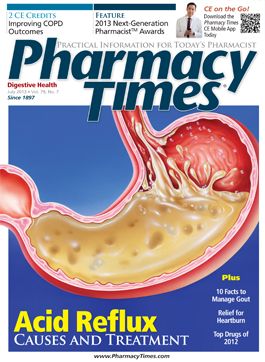Publication
Article
Pharmacy Times
Your Compounding Questions Answered
Author(s):
Q: I have a prescription for cidofovir cream for a pediatric patient’s wart. What vehicle and concentration should I use?
A: Cidofovir (Vistide, Gilead) was approved for treatment of cytomegalovirus retinitis in patients with AIDS in 1996. Its mechanism of action is suppression of cytomegalovirus replication by selective inhibition of viral DNA synthesis. It was not approved for other indications; this question concerns an off-label use. Chemically, cidofovir is an acyclic nucleoside phosphonate and therefore does not require phosphorylation by viral enzymes for its activity, as acyclovir does. It is nephrotoxic and therefore carries precautions against use in patients with impaired renal function and who are receiving therapy with other nephrotoxic drugs. Gupta M et al reported topical treatment of verrucae with cidofovir cream in 12 children (Topical cidofovir for refractory verrucae in children [published online September 26, 2012]. Pediatr Dermatol. 2013; 30[1]:131-134. doi: 10.1111/j.1525-1470.2012.01798.x. Epub 2012 Sep 26.). In this report, 7 patients exhibited partial to complete clearing of the treated verrucae when cidofovir in moisturizing cream was applied every other day at concentrations of 1% to 3%. The authors speculated that the low concentrations of cidofovir used might have led to the mediocre results. In other studies, patients have exhibited complete to partial clearing of anogenital papillomavirus lesions when treated with cidofovir.
Cidofovir is mutagenic: any preparations should be compounded using OSHA HAZMAT precautions (closed-front gown, gloves, mask, Class II biologic safety cabinet); recommended disposal of contaminated materials is high-temperature incineration.
Suggested topical preparation:
- Cidofovir 5%
- Cold cream (without) *100% as needed * Eucerin (Boehringer Ingelheim); Almonderm (Fagron US).
Suggested preparation method:
- Weigh/measure components accurately.
- Using geometric dilution technique, levigate the cidofovir into a small amount of propylene glycol or the cold cream to make a paste.
- Geometrically combine the paste in (2) with the cold cream until completely mixed. (If an Unguator is used to mix the material, use disposable blades, etc.)
- Label appropriately, and dispense with precautions about contact with healthy skin.
- Keep refrigerated up to 30 days (USP<795>).
Mr. Erickson is director of professional affairs and director of professional services at Gallipot, a Fagron company.







